As Orvis has worked to rethink and reinvent many of their rod series in recent years – starting with its award-winning Helios 3 (H3) series – I was curious to see what they’d do with their fiberglass offerings. Part of me even wondered if Orvis would opt to keep glass rods in their lineup. But with the recent release of its latest version of its “Superfine” line of fiberglass rods, Orvis has made clear that it intends to maintain its commitment to offering anglers fiberglass options.
At the International Fly Tackle Dealers 2022 show in Salt Lake City, I finally got my hands on Orvis’ latest iteration of the Superfine Glass fly rod series. It’s notably different than its predecessor, in ways that I think make it a better tool for fly anglers. The 2022 Superfine Glass rod is, broadly speaking, a more versatile tool than the last Orvis glass sticks.
What Works
Modern/Retro Design
Orvis made some fun design choices with the new Superfine Glass rods that just make it a wonderfully unique product. In keeping with the “sticker” theme that started on the H3, the Superfine Glass has an olive-green sticker above the cork. The sticker is the same color as the fiberglass from the old Superfine Glass rods, and it keeps the same cursive script, too. These nods to retro design are artfully blended into the modern dark gray blank, anodized aluminum reel seat, and section alignment dots.
The folks at Orvis also opted for a retro stripping guide, too. It’s smaller in diameter than stripping guides on most graphite rods, built from hard chrome. It’s a small, but notable, design choice that just makes the whole rod pop. I personally like that Orvis opted to keep the blank a muted gray, instead of any of the dozens of colors other glass rod builders offer.
Improved Torsional Stability
The biggest change between the old and new Superfine Glass models is the use of S-2 fiberglass in the 2022 edition. One of the more legitimate knocks against glass rods is their general lack of torsional stability (how much the rod moves side-to-side during a fly cast). S-2 glass is much more stable than the fiberglass Orvis previously used, which vastly improves the rod’s accuracy.
I noticed a significant difference in how accurate my casts were at all usual fishing distances while using the Superfine Glass. My review model was a 7’6” 3-weight, and I was comfortable fishing it with a single dry fly out to 45 feet. While accuracy is almost exclusively dependent on an angler’s skill, some rods are inherently more accurate than others. The Superfine Glass is an inherently accurate rod, especially for fiberglass.
Smooth Casting
Another improvement that’s a direct result of S-2 glass is in the casting. Sometimes, especially in lighter weights, glass rods have a “whippy” action. The Superfine Glass is one of the smoothest-casting glass rods I’ve ever used, and it’s noticeably better than the old model. Casting is slow and methodical at all distances, as you’d expect from a glass rod.
I was impressed with how well the Superfine Glass rod handles casting short distances, like when I was fishing pocket water. The tip is stable enough to cast a foot of fly line and mostly leader, with passable accuracy. But this rod really sings at 20-35 feet, delivering a wonderfully slow and retro casting tempo.
Perfect Tip
I mentioned this above, but the tip section of the Superfine Glass is perfectly built to complement the rest of the rod. The tip is supple, as you’d expect with glass, which aids in creating soft, gentle presentations. It’s also helpful when fighting big fish, since the rod tip absorbs much of the shock passed through the tippet, meaning you’re less likely to lose a big fish on light line.
But the tip isn’t so soft that it’s useless for fishing in tight situations. Glass, by its very nature, lends itself well to casting in tight quarters, because the weight and action of fiberglass can form loops with just leader and tippet. If you spend a lot of time on small water — as many glass anglers do — you’ll appreciate just how well you can cast off the tip with the Superfine Glass.
What Doesn’t Work
No Hook Keep
For all the wonderful things Orvis does with their fly rods, I still don’t understand their aversion to putting hook keeps on their rods. At least give customers the option for a hook keep.
Grip
This is a slight gripe on my part, but I think it’s worth noting. Even on the 3-weight model I used, the cork grip felt a bit too bulky. I’d like to see Orvis slim down the cork and reel seat a bit to both reduce weight and improve the feel of the rod in-hand.
Final Word
At $498, the Orvis Superfine Glass fly rods are among the premier glass rods on today’s market. Its use of S-2 glass sets it apart from other fiberglass rods by creating a blank that’s more stable and inherently accurate. It still has the wonderfully slow, deep-flexing action glass aficionados enjoy, but it has enough backbone to compete for anglers’ attention in today’s rod market. It’s a great step up from the previous Superfine Glass rods.




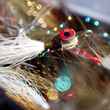
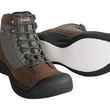









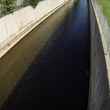



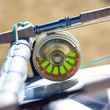




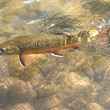






Comments
Rod Burke replied on Permalink
What kind pf glass was Orvis using in their Superfine Glass series before they switched to S2 glass?
Pages